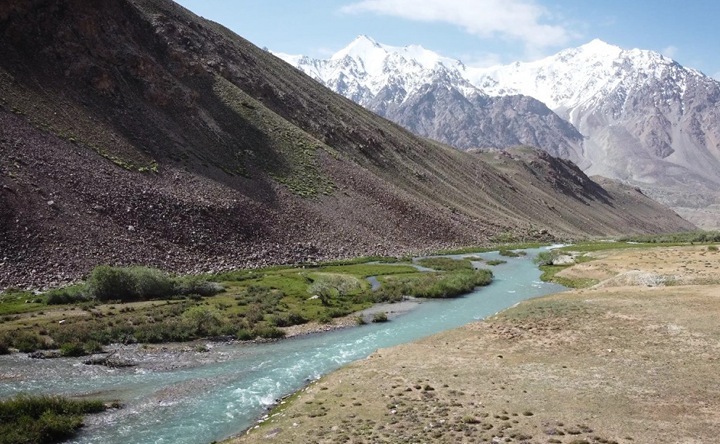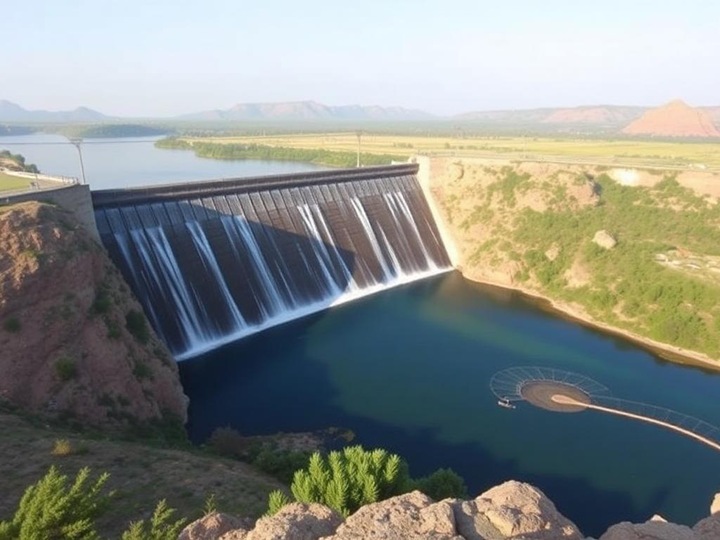The new policy of development banks protects only one river in Central Asia from Dams
The new environmental rules of the largest multilateral development banks, designed to preserve unique river ecosystems, will in practice be able to protect only one river in the whole of Central Asia from dam construction – the transboundary Panj. Dozens of other vital rivers in the region remain under threat due to the ongoing “hydro-construction boom.” This conclusion was reached by experts of the ecological coalition “Rivers without Boundaries” in a report presented today at the 32nd International Congress on Environmental Biology in Brisbane (Australia).

In his speech at the congress, the international coordinator of the coalition, Yevgeny Simonov, stressed that although the recent decision of the Asian Development Bank and the European Bank for Reconstruction and Development not to finance projects on “free-flowing rivers” with a length of more than 500 kilometers is an important breakthrough, its effectiveness for Central Asia is extremely limited. Due to large-scale economic transformations in the region, there are almost no large rivers left that have retained free flow over such a length. This means that the new policy of banks leaves an opportunity to finance dozens of new Dams on other valuable rivers whose free-flowing sections are shorter than the established threshold.
To assess the real consequences of hydraulic engineering, experts from the Rivers Without Boundaries coalition conducted a comprehensive analysis of the Amu Darya basin, examining the river network with a total length of 34,000 kilometers. The study showed that the fragmentation of rivers by dams and a fundamental change in the natural flow regime are the main threats to freshwater biodiversity. Already today, 88 dams have been built in the Amu Darya basin, and at least 52 more hydropower facilities are planned by the governments of Central Asian countries, most of which are being built with the support of international banks.
The greatest concern is the fate of the unique ichthyofauna. The Amu Darya basin was home to 26 rare and endemic fish species, but at least three of them, including the Aral trout (salmon), are already considered extinct. Species such as the great Amu Darya pseudopathos are on the verge of complete extinction. Their survival directly depends on the preservation of the last intact sections of the rivers. Another important task is the restoration of unique floodplain ecosystems – tugai, which are rapidly disappearing under anthropogenic pressure.
The study of ecologists vividly illustrates the contrast between the Vakhsh and Panj rivers. Vakhsh is already significantly fragmented by the Dam cascade, its integrity is only 37%, and the construction of the giant Rogun Dam will further aggravate the situation. At the same time, the Panj, which forms the Amu Darya, retains 92% of its connectivity and natural flow. However, the planned construction of 14 Dams on the main channel of the Panj can reduce this figure to a catastrophic 13%, which will lead to irreversible consequences for the entire ecosystem.
The Rivers Without Boundaries Coalition calls on international financial institutions and governments of the countries of the Central Asian region to adjust plans for the development of water infrastructure. It is necessary to move from universal criteria to a differentiated approach that ensures the protection of several of the most valuable free-flowing rivers in each major basin, regardless of their formal length. The priority measures should be the protection of the Panj River and other free-flowing rivers, the preservation of key river sections in the network of specially protected natural areas, the development of ecological runoff standards for regulated rivers and the introduction of comprehensive programs to restore freshwater ecosystems and floodplain forests in already modified, but still with high conservation value habitats.
Presentation by E. Simonov and co-authors at the 32nd International Congress on Environmental Biology in Brisbane (Australia): https://rivers.help/pdf/2025_Simonov_ICCB-2025.pdf
Original (in Russian): Новая политика банков развития защищает от ГЭС только одну реку в Центральной Азии


